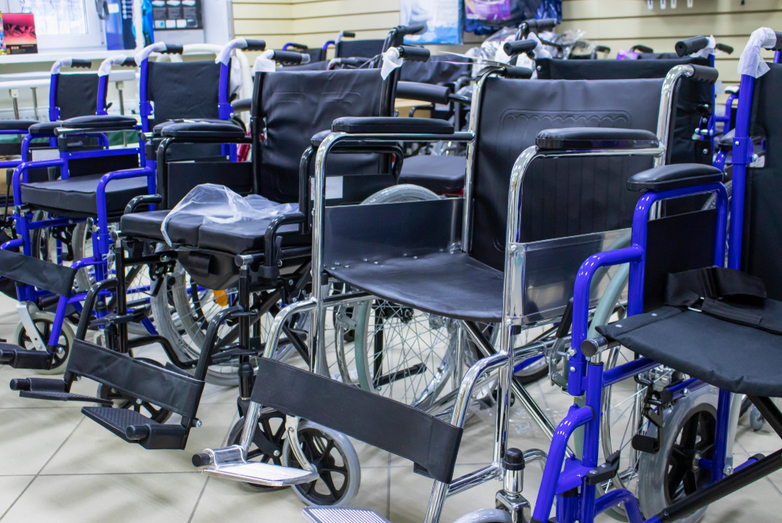There are lots of wheelchair options from which to chose from manual to electric, but whatever option you choose, making sure your wheelchair fits you is crucial to your health. Proper fit ensures your safety but also effects not only your posture and comfort but can cause pressure ulcers when ill-fitting. So, just how do you find a wheelchair that fits you properly? Let’s explore how you find the wheelchair that fits you best.
The Seat
The first step is the measurement for the seat. You will need to measure your hips from side to side, keeping the line straight. Add two inches to your measurement and you will have the seat width you need for your wheelchair. Next, measure from the back of your hip to the back of your knee while seated (you may need help with this one). Subtract a single inch from the resulting measurement to get an accurate seat depth for your wheelchair. The height of your wheelchair seat is also key, should you need to use your feet to move you while in your wheelchair. To determine the height needed, measure the distance from the back of your knee to your heel, so your seat height will allow you to reach the floor with your heels.
The Arms
This step begins with determining whether you will need a full-length or desk-length wheelchair arms. Full-length arms provide the support needed for those who need assistance pushing up from the chair for standing as well as those who will be doing pivoting stand-up transfers. Desk-length arms are better suited to wheel-chair bound individuals who need to comfortably sit at a desk or table much of the time. Desk-length arms will permit ease of movement to get as close as needed to the table or desk. Once decided, you will measure for arm height. The measurement begins from the elbow down to the seat of the chair while you are holding your arms up, elbows bent at a ninety-degree angle (again you may need help getting an accurate measurement). If available, adjustable-height arms are a good option.
The Back
For this measurement, you will need to sit in the wheelchair and have a friend or family member measure you from your collarbone to the seat. Should you need additional back support, elevated back rest as well as reclining back rests are available, which your doctor can prescribe as needed.
The Footrest
The measurement for your footrest is determined by a measurement from the back your knee to your foot’s heel. Once measured, you have ethe choice of elevating leg rests or articulating leg rests. Elevating leg rests are best for those who need to elevate their legs, such as those with edema, injury, or swelling. These leg rests lock while raised allowing you to elevate and extend your legs. Articulating leg rests are longer and used if you are taller.
Gauging Weight
Wheelchairs are designed with weight limits in mind, so you will need an accurate weight to ensure your chosen chair can support you properly. Also, in regard to weight, you will need to consider the weight of the chair you choose, particularly if you will be lifting and moving it into your car. Your upper body strength can help determine the weight of wheelchair you can lift manually with ease.
Wheelchair Transportation
Stellar Transport is here to help you when you need wheelchair transportation. A family run business, Stellar Transport began because the founder’s grandmother needed wheelchair transportation, so they understand the ins and outs of how important safe and caring wheelchair transportation is to you, your caregivers, and your family. Call today to find our how Stellar Transport can provide for all your wheelchair transportation needs – local to long distance.

